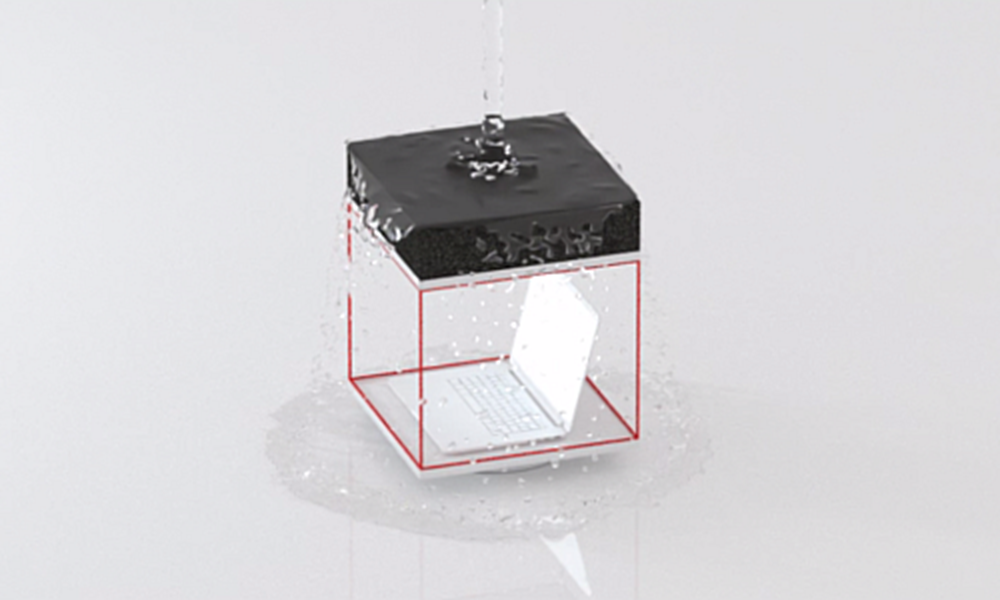How to eliminate thermal bridging ?
Perinsul HL, a combination of caracteristics

For an energy-efficient household, installing a thermal insulation over the entire building envelope has become quite common and mandatory. We apply it in floors, walls and roofs to maintain a convenient temperature in our buildings all year round. Thereby, saving a lot of money in the long run.
PROVEN CONCEPT
The rapid pace of change requires proven concepts, and cellular glass is one such example. It is unique among thermal insulation materials, combining a time-tested low thermal conductivity with a very high compressive strength. And the load-bearing capacity of cellular glass exceeds that of any other commonly available insulation material.
It is this unique composition that makes PERINSUL HL possible, and it maintains its performance throughout the life of the building. PERINSUL HL elements have excellent dimensional stability, and will not shrink or degrade to the detriment of the structure.
The performance of PERINSUL HL has been verified by European Technical Assessment (ETA), and the product is CE marked as a result. Third-party testing and assessment gives reassurance and peace of mind for specifiers and installers alike, and PERINSUL HL also has the benefit of a British Board of Agrément (BBA) certificate, and accredited details.
LOAD-BEARING
The product’s compressive strength, durability and dimensional stability allows it to be installed in structural load-bearing areas of a building without fear of it moving or flexing. At FOAMGLAS®, we see PERINSUL HL as the ‘insulation that thinks it’s a brick’.
It is particularly well-suited to masonry construction - straightforward to lay in mortar, and coursing in with brick and blockwork walls to suit the position needed - but also designed for timber framed and steel framed construction. Capable of bearing the structural load of up to two storeys above it, PERINSUL HL is suitable for a wide range of building types.
ENERGY EFFICIENCY
All of those building types need to perform as efficiently as possible in terms of heat loss and energy use. In modern construction, insulation standards throughout the building fabric tend to be high - but it is the details that really matter. Junction details - where the ground floor meets an external wall, or where a wall connects with the roof - need to be well insulated too.
The better the thermal efficiency elsewhere, the greater the proportion of heat loss at these junctions, where insulation is often not continuous. Any break in the insulation layer is a thermal bridge, and a building’s structural requirements could make some of these junctions almost impossible to insulate adequately.
Now, with PERINSUL HL, there is an insulation solution to virtually eliminate the effect of thermal bridging at the base of perimeter and internal partition walls, in flat roof parapets, and below door and window cills.
Healthy living
Eliminating thermal bridges reduces heat loss from the building and improves energy efficiency. The internal surface temperature at the thermal bridge is raised, making it close to or the same as the surrounding construction.
Less dramatic difference in temperature reduces the movement of heat energy, and occupants’ perception of draughts and differences between hot and cold. In short, buildings become more comfortable as well as more efficient.
When ‘cold spots’ are eliminated, the risk of condensation occurring at them due to a lower surface temperature is eliminated too. There is no potential for mould growth, so the interior climate is also healthier for occupants.
Watertight
PERINSUL HL is ideal for new-build projects, where we have the techniques to keep water out of the building. It can also be retrofitted into existing buildings to address thermal bridging issues and improve energy efficiency.
Moisture is more prevalent in traditional constructions where adequate damp proofing was unavailable. A thorough assessment of moisture should always be carried out before undertaking retrofit measures, and a plan agreed in advance of starting work.
Cellular glass is a closed cell material and does not absorb moisture, meaning FOAMGLAS® PERINSUL HL remains 100% dry and maintains its thermal performance 100% of the time. PERINSUL HL can act as a barrier to capillary action, protecting timber structures from rot or metal components from corrosion, as part of the retrofit plan.
Perinsul dedicated website
To find out more about how PERINSUL HL eliminates thermal bridging at previously hard-to-insulate junction details, visit our dedicated product site. Here you’ll find out more about our product, along with its specific applications and incredible benefits.
We’ve also compiled a detailed and extensive advice centre containing case studies which have utilised the PERINSUL HL solution, along with blogs and helpful “how to” guides to ensure correct installation of the PERINSUL HL solution within your next project.









